Back to blog
5 MIN READ
6 Usability Testing Methods to Improve UX in Mobile Apps
PUBLISHED
20 June, 2023

Product Analytics Expert
Usability testing is a popular observational research technique for finding design issues and opportunities. Despite billions of app downloads globally, only approximately 38% of businesses test their mobile apps for usability. So, businesses looking to get ahead of the competition by implementing usability testing is a smart business move.
Here at UXCam, we agree that good usability and UX is the backbone of successful apps, and that’s why we’ve stepped in to help more mobile app product teams get their usability testing and UX on point. Our tool helps you to measure how well your app supports your target customers in achieving their goals for more conversions.
What are the top usability testing methods?
Here are six usability testing methods to improve UX in mobile apps 1. Session recordings 2. First-click (first-tap) 3. Eye-tracking 4. Card sorting 5. Lab testing 6. Guerrilla testing
In this article, we’ll go through these 6 usability test methods and how our tool can support you.
Session recordings - unmoderated and remote
Session recordings testing allows product teams to evaluate how users naturally interact with app elements. You'll see the entire user journey to learn whether the path to goal achievement is smooth or with pain points and understand the pain points. See behavior such as frustration rage taps, drops offs, and more.
UXCam session replays deliver 100% session recordings. The data collected is security compliant, and all screens with sensitive information are concealed. We provide actionable insights that can be easily communicated across your teams so that design decisions are easier to make.
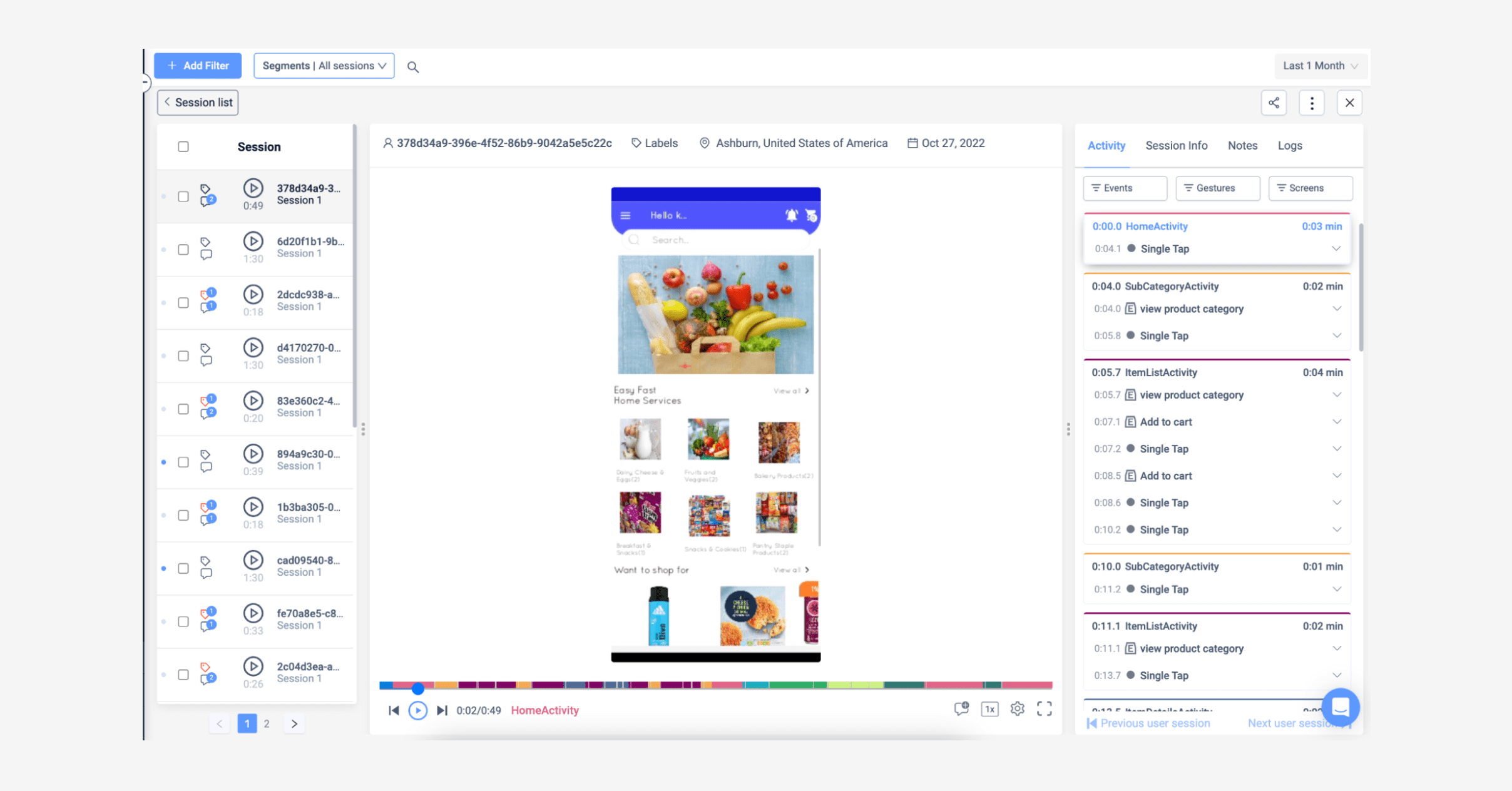

First-click (first-tap) - moderated and remote
First-click tests are traditionally performed to test desktop apps. However, the same test method can be run to test mobile apps.
This test assesses whether users can quickly recognize the elements they must interact with to complete a task. Before revealing your app design, participants are given tasks like upgrading their account to a paid plan. The moderator stops the test once the user taps on the first element.
UXCam supports first-tap testing as product teams can analyze and compare where users tap first using functionality like session replay, event analysis, and heatmaps.
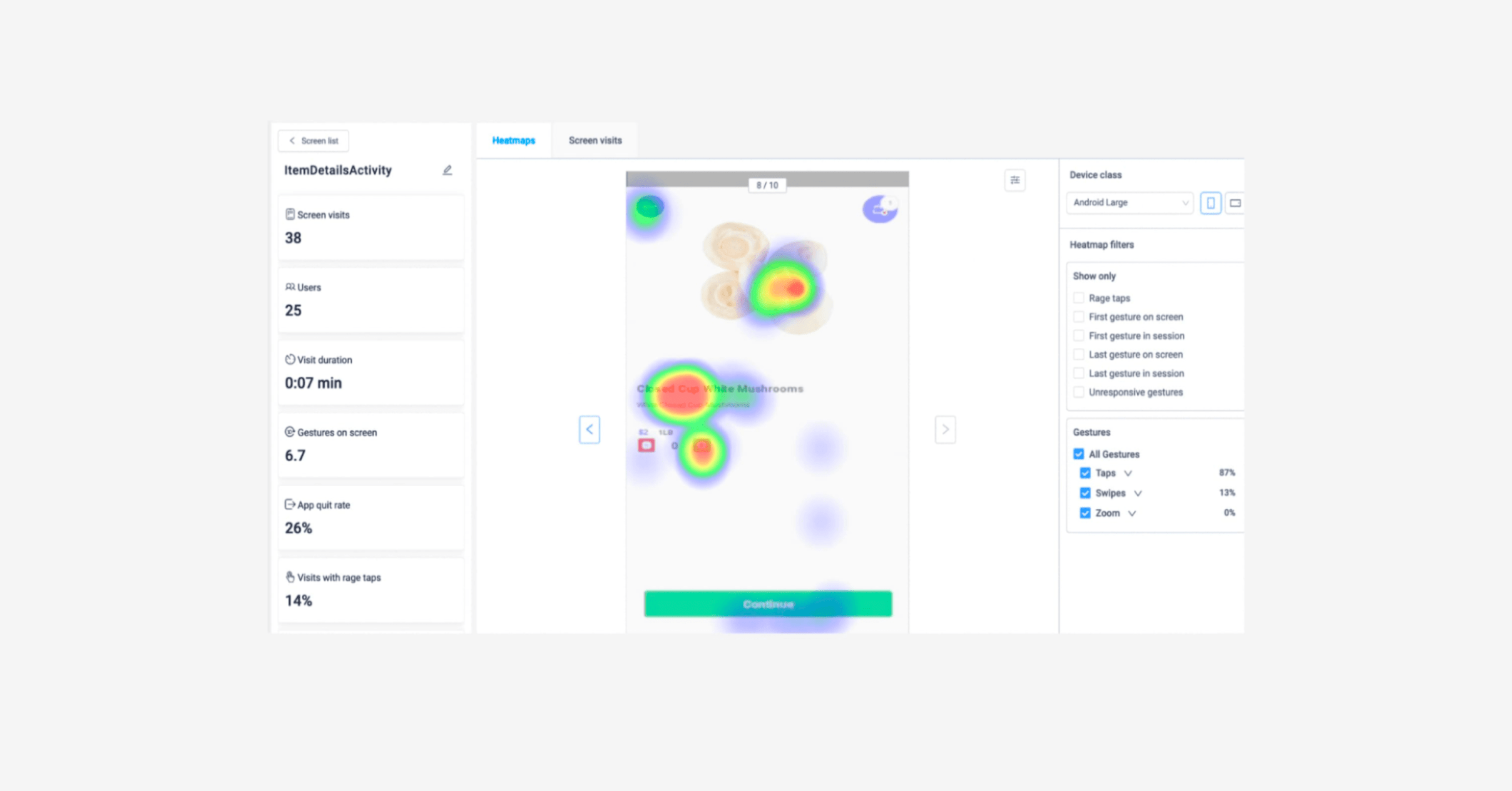

Eye-tracking - unmoderated and in-person
During an eye-tracking study, the user's eye movements are observed using heatmap and pathway diagrams or specialized cameras to pinpoint a user's gaze at any moment. This technique determines where the user's attention is directed while completing a task. It's ideal for learning whether your current design is engaging or distracting to navigate.
With UXCam's heatmaps, you can run your eye-tracking tests remotely, as it provides your app's most and least attention-grabbing elements. Compare engagement across devices, view entry and exit screens per heatmap, and replay associated sessions for the full picture of your user's journey.
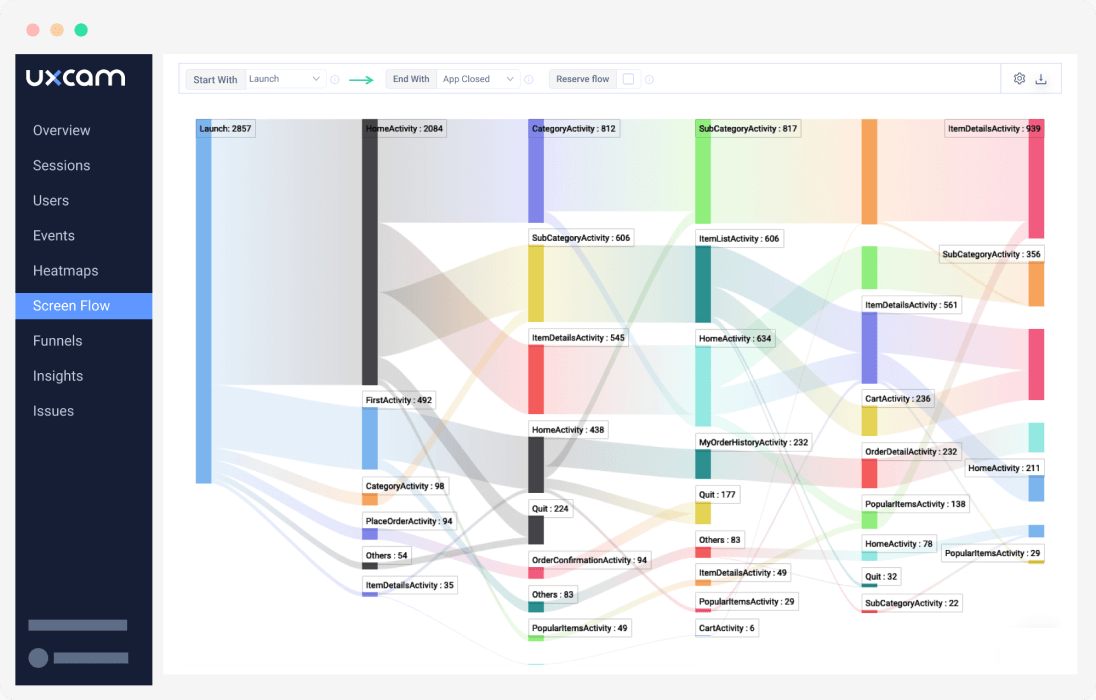

Card sorting - remote and moderated
The card sorting method is when you ask your users to organize topics into categories. It's used to verify whether your app's information architecture matches users' expectations and for design ideas for making navigation more effective and intuitive.
For a remote card sorting session, participants can be asked to sort virtual cards using a specialized card sorting tool or consider an online tool that allows users to do basic affinity mapping. While the test doesn't need to be observed, when participants are done, you ask them follow-up questions like why they organized the groups the way they did and their thought processes.
Lab usability testing - moderated and in-person
Lab usability testing typically takes place in a purpose-built lab. Users are asked to complete tasks while the moderator issues task instructions, ask questions, and responds to their feedback. Traditionally, two rooms are divided by a one-way window where researchers take notes without disturbing the users.
The session is recorded, but you can also use UXCam's session recordings to pick up 100% of their in-app interactions for further behavior analysis.
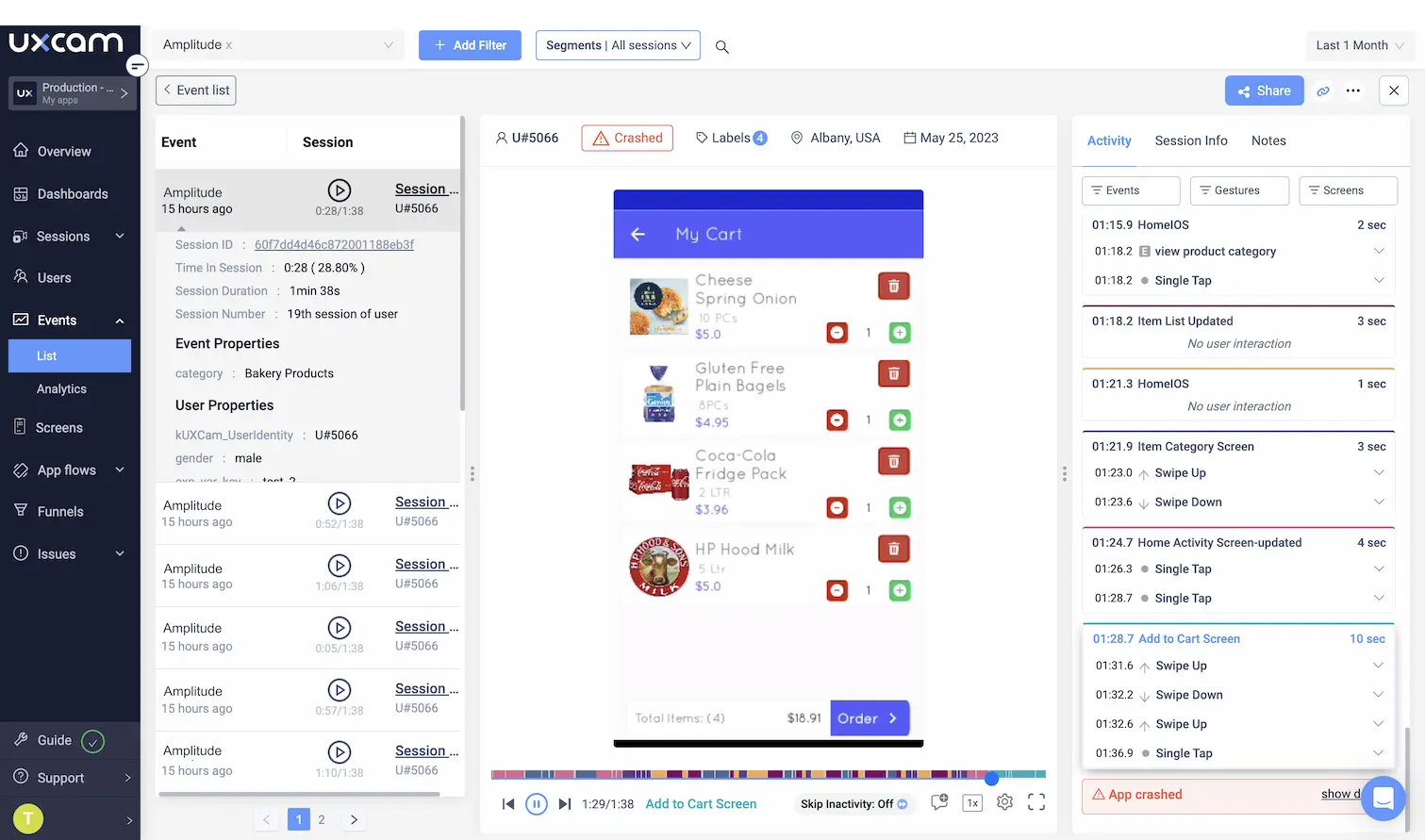
Lab usability testing is ideal if you need standardized quality control for each test necessary for comparison usability testing. In addition, lab testing offers insight into emotions, body language, and facial reactions.
Guerrilla testing - moderated and in-person
Guerrilla testing is for choosing random test participants in a public place, like a mall, cafe, supermarket, or airport. Participants who haven’t interacted with your app or prototype before can take part in a quick usability test in exchange for an incentive like a gift card— if your budget permits.
Guerrilla testing is an agile way to test your app for quick high-level feedback. It can be an ad-hoc test to help teams better understand the apps' design and functionality. This usability test method is ideal for collecting qualitative data and giving your brand some early exposure before you release a product to the live environment.
Mobile usability testing - FAQs
Mobile usability testing is a popular UX research technique where a series of tests are run against a mobile app to assess how easy it is for users to complete tasks.
Product teams can find opportunities to improve app usability by examining user behavior and reactions and seeing the journey to task completion from their perspective.
UXCam is a leading behavior analytics tool and collects natural in-app behavior for your usability tests. Unlike many other platforms, our established and market-leading SDK is designed for mobile apps only. Therefore, it won’t affect the experience and reliably collects genuine user interactions.
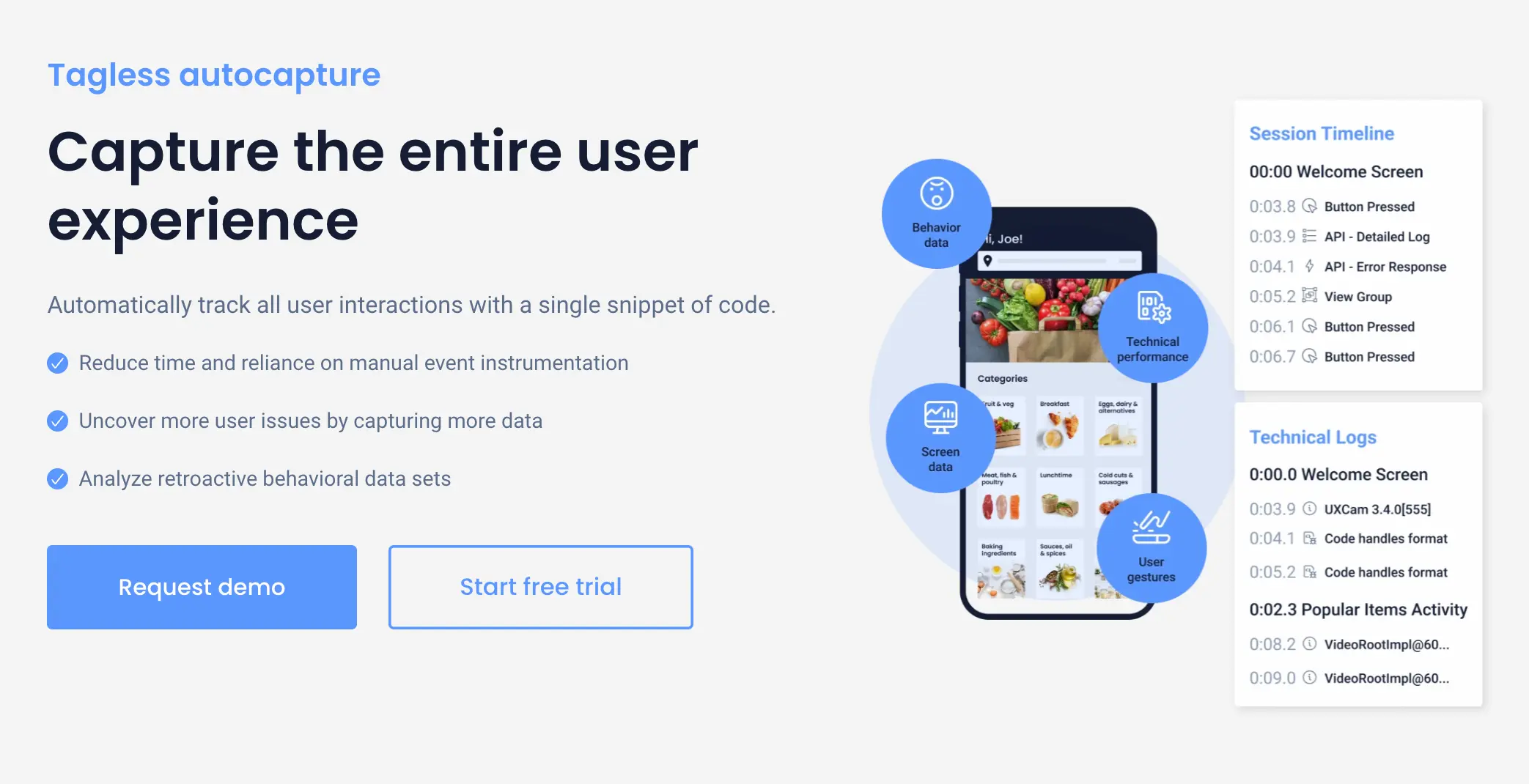
What are the benefits of mobile usability testing?
It verifies whether your target audience can complete their objectives efficiently and with ease.
It identifies usability design flaws and bugs.
It helps product teams to understand users better and learn their behavior to implement designs to serve them better.
It helps teams understand more about how the app works.
Finding usability issues earlier in the development process when they are cheaper to fix helps keep development costs down.
What's the difference between Usability testing vs User experience testing vs User testing?
People often get confused with the terms usability testing, user experience (UX) testing, and user testing, which is understandable since all three terms are intricately linked to UX and are used to improve the experience of end-to-end users. Here’s how to tell them apart:
| Usability Testing is for practicality | UX Testing is for emotion | User Testing is for validity | |
|---|---|---|---|
| It answers the question | Can people do what they want or need to do using your app? | Does my app provide the relevant experience to my target users? | Does my app solve the user's problem? |
| Definition | Usability testing measures how easy participants find using your app to achieve predefined tasks. | UX testing, sometimes called usability testing, measures the participant’s interaction and experience with your app. It determines how users feel about your product throughout their experience. | User testing tests all in-app elements that your users experience and interact with. Participants perform specific tasks in realistic conditions to test the apps' functions. |
| Test goals | Efficiency, effectiveness, learnability, error prevention, and memorability | Satisfaction, enjoyment, fun, pleasure, and value. Build brand loyalty and boost conversions. | Usefulness, user-friendliness, usability. Validates demand for your app. |
What are the main types of usability testing?
Moderated and unmoderated - Moderated testing is when a moderator facilitates the session in person or remotely. While unmoderated test sessions are conducted without direct guidance, the test instructions can be issued before testing.
Remote and in-person - Remote sessions are conducted online or by phone. In-person test sessions require the physical presence of a facilitator.
Explorative, assessment, and comparative - Explorative testing is open-ended, where participants are required to give their opinions about app ideas and concepts. Assessment tests evaluate your app's overall functionality. And comparative test methods involve asking users to state their preference between your app and a competitor.
Discover how well your app serves your customers with UXCam
In a nutshell, usability testing finds out whether people can use your app to achieve their goals without headaches. And there are several methods to assess how well your app design supports your users and what the experience is like for them.
Observing behavior and actions is the foundation of usability testing. However, people act differently when they know they are being watched. Fortunately, there are methods for discrete observation, including a Lab setup or using a behavior analytics tool.
Leading mobile app analytics platform UXCam records sessions and delivers the data required to examine how well your app meets customers' expectations. Our market-leading lightweight SDK collects data without disturbing UX, giving you real insights to develop empathic products.
Start using UXCam today for free, or request a demo.
Related articles
Top 5 mobile app usability testing tools
UX Testing: A practical beginner’s guide
UX Optimization: 4 Steps to deliver a better user experience
How to improve user experience on mobile apps
AUTHOR

Tope Longe
Product Analytics Expert
Ardent technophile exploring the world of mobile app product management at UXCam.
What’s UXCam?
Related articles
UX design
Auditoria de UX – Como Realizar uma (Etapas, Modelos e Checklist)
Navegue por auditorias de UX com facilidade usando nosso guia para iniciantes, com instruções passo a passo, modelos personalizáveis e um checklist...

Tope Longe
Product Analytics Expert
UX design
UX Audit - How to Conduct One (Steps, Templates & Checklist)
Navigate UX audits effortlessly with our beginner's guide, offering step-by-step instructions, customizable templates, and a detailed...

Tope Longe
Product Analytics Expert
UX design
12 UX Metrics to Measure and Enhance User Experience
Unlock product success by tracking the right UX metrics. Learn 12 essential metrics, how to measure them, avoid common pitfalls, and take action with tools like...